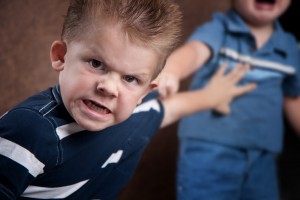

Boys are more likely than girls to drop out of school and take part in anti-social behaviour.
During childhood and adolescence, any number of life events can present challenges to children’s wellbeing, threatening their chances to become physically and mentally healthy adults. Boys are more likely than girls to drop out of school, be delinquent and drink alcohol, and they are less likely to go to college than their female counterparts (Bandy, 2012). Many intervention programs have different outcomes for boys and girls, so there is no one-size-fits-all approach to treatment.
This is why I was delighted to come across two Child Trends’ Factsheets that deal separately with interventions and outcomes for boys and girls. Each one summarises a separate systematic review investigating the impacts of non-school social intervention programs on improving outcomes for children and adolescents. This review deals with boys, whereas the one I will be blogging about later looks at the situation for girls.
What they did
The author carried out a systematic review of the current literature available from the LINKS Database, which uncovered 115 studies that met the following inclusion criteria:
- Randomised trials of male children and/or adolescents that include an intention-to-treat analysis
- Co-ed interventions that provide impact data specifically for male children and adolescents
- A minimum of 100 males in each evaluation sample
Eight outcome areas were identified:
- Academic Achievement (e.g. national test results)
- Delinquency (e.g. violence, crime or arrests)
- Externalizing or Acting out behaviours (e.g. aggression or hyperactivity)
- Mental Health/Internalizing (e.g. depression, social rejection or suicide)
- Physical Health & Nutrition (e.g.diet, BMI, weight or physical activity)
- Reproductive Health & Sexuality (e.g. sexual activity, contraceptive use or pregnancy)
- Social Skills (e.g. interaction, conflict resolution or empathy)
- Substance Misuse
The authors categorised the effect of the programs according to their impact on the outcome areas, as either:
- Found to work
- Mixed findings
- Not found to work
What they found

Half of the programs included in the study had a positive impact on boys’ wellbeing, behaviour or achievement.
They did not find any one program that worked across all outcome measures, but some themes came to light. In summary, for male children and adolescents:
- 57 of the 115 programs had a positive impact on at least one outcome reviewed
- 27 programs had mixed findings
- 31 programs had no positive impacts
[table id=1 /]
The authors concluded

Interventions are more successful for boys when carried out by trained professionals.
Although few strategies or practices stood out as always effective, the most effective interventions tended to be structured, intense, high dosage, and facilitated by trained staff persons. For example, interventions that were manualised, met frequently on a scheduled basis, and were implemented by teachers, psychologists, or other trained professions were likely to have positive impacts. In contrast, programs that met less frequently, and those that were facilitated by peers or untrained staff, tended to less often result in positive impacts for boys.
Importantly, we found some similarities between strategies that work and do not work for males, and those identified as working and not working for females. Specifically, we found that mentoring led to positive impacts for males’ and for females’ academic outcomes. On the other hand, there were meaningful differences between what worked for females and males in certain outcome areas. Given these findings, exploring and assessing which strategies work best for both males and females seem important and critical in continuing to improve development outcomes among youth.
The Education Elf’s View
 This systematic review provides an interesting overview of a variety of social interventions, and looks at their impact on a range of outcomes for boys. However, the review does have some limitations that may cause potential bias:
This systematic review provides an interesting overview of a variety of social interventions, and looks at their impact on a range of outcomes for boys. However, the review does have some limitations that may cause potential bias:
- The authors of the review don’t explain specifically how they categorised programs into 3 categories (Found to work, Mixed findings and Not found to work)
- All included studies were taken from the LINKS database only. The eligibility criteria for this database are available online, but there is no information about how comprehensive the coverage is. Therefore, it is likely that a significant amount of evidence is missing
- English language studies only were used
- In-school time, classroom-based programs were excluded
- There is no methodology section in the review, so it is impossible to see how large the studies were, how many participants there were in each study, how results were pooled and how statistical analysis was conducted
- All studies are weighted equally, regardless of the numbers of participants in each one
This systematic review, like so many in education, tries to do too much at once, so compromising quality for quantity. Although interesting in its coverage of many outcomes, I would like to see a more focused review that asks a specific question or two, and uses greater analytical and statistical rigour, so providing the reader with a specific, more reliable answer.
Regardless of these limitations, this review is a useful starting point for teachers and policy makers considering interventions for improving health and wellbeing in male children and adolescents. I wonder if the same principles can be transferred to those anti-social elves that terrorise the woodland in their hatties…
Links
Bandy T What works for male children and adolescents: Lessons from Experimental Evaluations of Programs and Interventions (pdf) Child Trends Fact Sheet Publication (2012)
